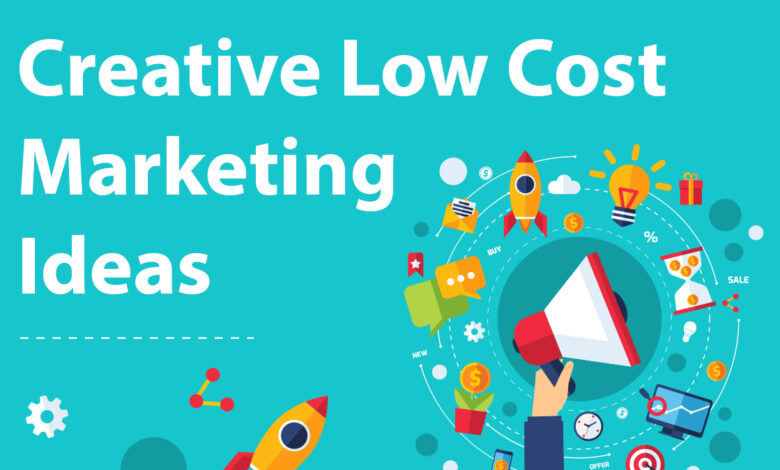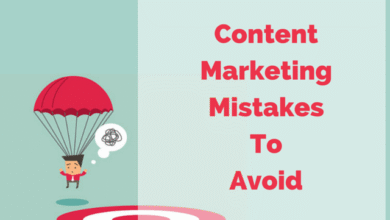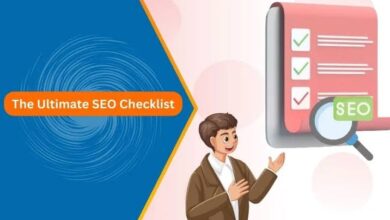25 Low-Cost Marketing Ideas That Actually Drive Sales

Businesses need sales to thrive, but often face a big problem: marketing budgets are tight or limited. Many small business owners and startups wonder, how can I get more customers without spending a lot? The good news is that driving sales doesn’t always mean spending a fortune on ads or fancy campaigns. In fact, many low-cost marketing ideas that actually drive sales can work wonders if done smartly and consistently.
Marketing success today depends more on creativity, understanding your customers, and using the right tools than on throwing money at promotions. You don’t need to be a marketing expert or have huge resources to start growing your business. From writing helpful blog posts to engaging on social media, there are smart, inexpensive strategies that connect you directly with your target market and build trust.
In this article, you’ll discover 25 practical, low-cost marketing ideas that actually drive sales. These methods have been proven effective, helping small businesses and entrepreneurs get real results while staying on budget. We’ll cover ideas in content marketing, social media, email marketing, local community engagement, partnerships, and customer loyalty strategies. By the end, you’ll have a treasure trove of tactics to choose from and start implementing right away.
25 Low-Cost Marketing Ideas That Actually Drive Sales
Marketing doesn’t have to break the bank. Many of the best ideas rely on smart planning, genuine customer connections, and consistent effort – not huge budgets. Let’s explore each category with specific ideas that make a measurable difference.
1. Content Marketing: Attracting Customers with Valuable Information
Content marketing means sharing useful, relevant information that draws people to your brand. Instead of interrupting customers with ads, it attracts them by solving problems or answering questions they have.
Idea 1: Start a Blog
A blog is a section on your website where you regularly write posts or articles about topics connected to your business. For example, if you sell gardening tools, you could write about “How to Start a Vegetable Garden” or “Best Plants for Beginners.”
These articles attract people searching on Google for these answers. When they find your blog helpful, they trust your business and are more likely to buy your products.
Blogs don’t need to be long or complicated. Even short, clear posts answering common questions can work well. Over time, as you add more useful content, search engines will rank your site higher, bringing more visitors organically (without paid ads). You can also share these blog posts on social media or in emails to keep your followers interested.
Idea 2: Create Engaging Infographics
An infographic is a picture or graphic that shows information or data in a simple and visual way. Instead of writing long blocks of text, you can use charts, icons, and colors to explain something quickly. For example, a food business might make an infographic showing “5 Easy Steps to Make Healthy Smoothies.”
People like infographics because they’re easier to read and remember. Also, infographics are often shared on social media or other websites, which brings new people to your brand.
You don’t need expensive software to make them — many free tools like Canva allow you to create beautiful infographics even if you’re not a graphic designer.
Read Next: How Brands Are Using Memes to Sell More
Idea 3: Produce How-To Guides/Tutorials
How-to guides or tutorials show your customers how to do something step by step, often using your product or service. For example, a beauty brand can create a tutorial video on “How to Apply Eyeliner Perfectly” using their product.
These guides help customers understand your products better and see their value clearly. If customers understand how to use a product, they are more likely to buy it.
You can create these as blog posts, videos, or downloadable PDFs. Tutorials can also reduce customer questions and complaints because they explain the process clearly in advance.
Idea 4: Repurpose Old Content
If you have old blog posts or videos, don’t let them sit and gather dust. Instead, you can turn them into other formats. For example, take a popular blog post and turn it into a short video, a social media post, or even a podcast episode.
Repurposing content means you get more value without creating something brand new every time, saving you time and effort.
It also means you reach people who prefer different types of content — some like reading, others prefer watching videos or listening to audio.
Idea 5: Guest Blogging/Contributing
Guest blogging means writing articles for other websites or blogs in your industry. Let’s say you run a pet store; you could write a blog post for a popular pet care website. This helps you reach a new audience who might not know about you.
Guest blogging builds your reputation as an expert and helps your website get more visitors because you can include a link back to your own site.
More visitors mean more chances to make sales. Plus, it’s free advertising, as long as you take time to write useful content for others.
2. Social Media Marketing: Building Community & Visibility
Idea 6: Optimize Your Social Media Profiles
When someone visits your Facebook, Instagram, or LinkedIn page, they should immediately understand who you are and what you offer. This means filling out your bio or description completely with clear information, contact details, and links to your website or online store.
A well-done profile looks professional and trustworthy. Include your logo or a good profile picture, your location if relevant, and hours of operation if you have a physical shop. If profiles are incomplete or confusing, potential customers may leave without connecting.
Idea 7: Engage with Your Audience
Social media is not just about posting and forgetting. It’s about starting a conversation. Reply to comments people leave, answer their questions, and thank followers for positive feedback. This shows you care about your customers.
You can also ask your followers questions, run polls, or encourage them to share stories related to your products.
Engagement makes your followers feel part of a community, which builds loyalty. When people trust and feel connected to your brand, they’re more likely to buy from you again.
Read Next: How to Use Customer Reviews to Boost Sales
Idea 8: Run Contests & Giveaways
Everyone loves free stuff! By organizing contests or giveaways, you can encourage your followers to like your posts, tag friends, or share your content in exchange for a chance to win a prize related to your business.
This creates excitement and attracts new people because those tagged friends might follow you too. It also gathers email addresses if you ask participants to sign up to enter. This is an effective way to boost your visibility and grow your list of leads.
Idea 9: Use Relevant Hashtags
Hashtags help people find posts on specific topics. If you add popular and specific hashtags related to your product, like #organiccoffee or #DIYcrafts, more people interested in those topics will see your content even if they don’t follow you yet.
Research which hashtags are best by looking at what your competitors or influencers in your field use. Don’t overload your posts with too many hashtags – around 5 to 10 focused ones usually work best.
Idea 10: Leverage User-Generated Content (UGC)
User-generated content is when your customers share photos, videos, or reviews of your product on social media. You can encourage this by running campaigns or simply asking customers to tag your business.
Sharing UGC on your own channels shows authentic, real experiences with your product, which inspires trust in new customers. People trust other buyers more than advertising. A simple “Repost” of someone’s positive photo can help attract new buyers.
3. Email Marketing: Direct Communication for Conversions
Idea 11: Build an Email List
An email list is a group of people who have willingly given you their email addresses because they’re interested in your business. To build this list, offer an incentive, like a discount coupon, free eBook, or helpful checklist, in exchange for signing up.
Once people subscribe, you can send them updates and special offers directly in their inbox. Emails help you stay connected and remind potential customers about your products regularly.
Idea 12: Send Welcome Email Sequences
When new people sign up, don’t just add them to your list and forget. Automate a series of welcome emails that thank the subscriber, introduce your brand story, explain your products, and offer exclusive discounts.
These emails build trust and make subscribers feel valued. They gently guide readers from interest to making their first purchase without pushing too hard.
Read Next: GA4 Setup Guide for Non-tech Businesses
Idea 13: Share Exclusive Discounts & Promotions
Give your email subscribers special deals they can’t get elsewhere. This makes signing up to your list feel valuable and encourages quick purchases. You could offer early access to sales, bundle deals, or limited-time discounts.
Exclusive offers reward loyal subscribers and increase their chances of buying from you again.
Idea 14: Send Abandoned Cart Reminders
Many customers add items to their online shopping cart but don’t finish buying. Sending an automated reminder email nudges them back to complete the purchase. You can even include extra help like a FAQ link or offer a small coupon as encouragement.
This simple step recovers sales you would have lost and improves your online store’s profits without extra advertising costs.
Idea 15: Curate a Weekly/Monthly Newsletter
A newsletter usually includes helpful articles, new product launches, customer testimonials, or industry news. This keeps your brand in front of customers regularly without being too salesy.
When customers see your emails regularly, they remember you, increasing the chances they’ll return to your shop or website when ready to buy.
4. Local Marketing & Community Engagement
Idea 16: Optimize Google My Business Profile
Google My Business is a free tool that lets local businesses appear on Google Search and Maps. Make sure you claim your listing and keep details accurate: your address, phone number, website, photos of your business, and hours of operation.
When someone nearby searches for your product or service, your business is more likely to appear. It also allows people to leave reviews and see photos, helping them decide to visit your store or contact you.
Read Next: Why Startups Should Use Headless CMS in 2025
Idea 17: Collect Customer Reviews
People often check reviews before buying. Actively ask happy customers to leave reviews on Google, Yelp, Facebook, or your website. You can do this in person, by email, or via a message after purchase.
Positive reviews boost your credibility and influence others to trust your business. Be sure to respond politely to all reviews, good or bad, to show that you care.
Idea 18: Participate in Local Events/Markets
Being physically present with your products gives you a chance to meet customers face-to-face. Think farmers’ markets, craft fairs, local festivals, or community fairs. You can hand out samples, demonstrate products, and answer questions in person.
This direct interaction builds relationships and trust and often leads to on-the-spot sales or future customers who remember you.
Idea 19: Partner with Complementary Local Businesses
Find other local businesses that have customers who might like your product but don’t compete with you. For example, a bakery could partner with a local coffee shop. You can promote each other’s businesses through flyers, social media, or bundled offers.
This partnership helps both businesses reach new, relevant customers without extra cost.
Idea 20: Offer Local Workshops or Classes
Teach something related to your product or industry. For example, a florist can host flower arranging workshops; a fitness trainer might offer free yoga classes in a park. These events position you as an expert and help attract people interested in the topic.
Workshops create personal connections and often lead to sales either during or after the event.
5. Partnerships, Referrals & Customer Loyalty
Idea 21: Implement a Customer Referral Program
Encourage existing customers to bring friends or family in exchange for rewards like discounts, free products, or credits. For example, “Refer a friend and both get 10% off your next purchase.”
Referral programs work well because people trust recommendations from people they know. You get new customers while rewarding loyal ones.
Idea 22: Forge Influencer Collaborations (Micro-Influencers)
Micro-influencers are social media users with smaller but highly engaged followings. Partnering with them is affordable and effective because they talk to specific groups interested in your niche.
You can offer them free products or small payments to review your product or mention it to their followers, gaining authentic promotion.
Idea 23: Host a Webinar or Online Workshop
A webinar is an online seminar where you teach or share valuable information live or via recording. For example, if you sell kitchen gadgets, host a cooking class using your products.
Webinars attract people interested in your topic and help build your email list while allowing you to pitch your products softly during or after the session.
Read Next: How to Create a Short Video Marketing Strategy for Local Businesses
Idea 24: Offer Free Samples or Trials
Giving potential customers a free sample or a limited trial lets them try before they buy. It reduces their risk and makes them more comfortable with your product.
For example, a skincare brand might offer small sample sizes, or a software company might provide a free 7-day trial. If customers love what you give, they’re much more likely to purchase the full version.
Idea 25: Create a Loyalty Program
Reward your repeat customers with points they can collect and use for discounts or free items. Loyalty programs encourage more purchases because customers want to “earn” rewards.
You can keep it simple with punch cards or use digital apps for tracking points. This program builds lasting relationships and helps your best customers feel appreciated.
Conclusion
Many low-cost marketing ideas that actually drive sales exist beyond expensive ads. The key is to focus on consistent, creative approaches that truly understand and engage your audience. Building trust, providing value, and nurturing relationships matter far more than throwing large amounts of money at marketing.
Start by picking a few ideas from this list. Test them, measure results, and refine your strategy over time. With patience and effort, these cost-effective methods will help your business grow steadily and sustainably.
Frequently Asked Questions
1. Do low-cost marketing ideas really work for all types of businesses?
Yes. While results depend on your business type and audience, smart low-cost strategies like content marketing, social media, and referrals have broad effectiveness because they focus on genuine engagement rather than budgets.
2. How do I know which low-cost marketing ideas to try first?
Start by understanding your audience and where they spend time. If your customers are active on social media, invest there. If they search Google for information, starting a blog or SEO might work better. Pick ideas that align closely with your customers’ habits.
3. How long does it take to see results from these low-budget marketing strategies?
Some tactics like social media contests or giveaways can show quick spikes, while content marketing and email outreach usually build momentum over weeks or months. Consistency is key for long-term success.
4. Can I measure the success of low-cost marketing efforts?
Absolutely. Use simple tools like Google Analytics for website traffic, social media insights for engagement, and email marketing software to track open and click rates. Measuring helps you understand what works and where to improve.




